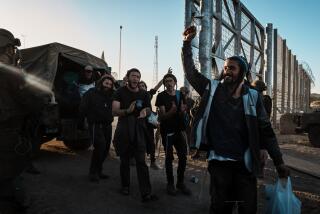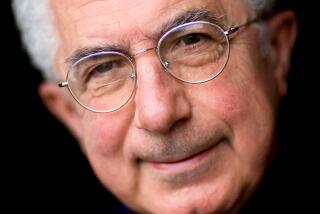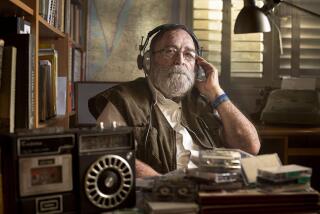Tale of Heroism at Old Israeli Fort Under Siege
- Share via
MASADA, Israel — Like generations of Israeli students before her, 19-year-old Hinda Lichtenstein made the steep, predawn trek up to the ruins of the Masada fortress last weekend to watch the sun rise over a seminal site in Zionist history.
Lichtenstein and her classmates toured the desert plateau where, according to Israeli tradition, nearly a thousand Jews made a heroic last stand against the Roman conquerors of Jerusalem and, in the face of defeat, chose suicide with honor rather than life in slavery.
“Masada is about Jews who had integrity,” Lichtenstein said during her descent. “They weren’t willing to give up.”
Since the founding of the state of Israel, Masada has provided its citizens with a symbol of the Jewish fighting spirit and heroism. But now, an increasing number of Israeli educators are calling the story of Masada a myth and saying that heroism is not the lesson provided by what occurred on the mount overlooking the Dead Sea. Suicide, they say, is no inspiration.
“A Jewish teacher can show sympathy for the suicide that was carried out to prevent the fall of the Jews into Roman hands, but do we teach suicide as a model?” asked Aryeh Barnea, principal of Jerusalem’s Denmark High School.
After the daily newspaper Haaretz reported last month that the school had canceled field trips to Masada, Barnea responded in print that his students would continue to visit the historic spot but would be told a more complete story.
“Back when the fact that armed Jews confronted an enemy was a sensation, the Masada story served the Zionist education. . . . We needed every warrior--even if mythical--to raise a generation of fighters,” Barnea wrote. “I was raised on this myth, admiring . . . the commander of the fighters and those who committed suicide until the day I learned a few more details.”
Hebrew University sociologist Nachman Ben-Yehuda, author of “The Masada Myth,” says most Israelis believe the following story: Hundreds of Zealots, or patriotic Jews, who fought for Jerusalem fled the Holy City after its fall in AD 70 and holed up in the southern fortress built by King Herod a century before. There, they held off a legion of Romans for three years.
When they saw that the Romans were about to overrun their defenses, the story goes, their leader, Elazar Ben Yair, gave a speech asserting that death with glory was preferable to life in bondage and persuaded the group to commit suicide rather than surrender. The Roman conquerors who reached the top of Masada found 960 corpses.
Ben-Yehuda argues that this account has several errors. First of all, he says, most of the Jews at Masada did not fight in Jerusalem and were not the patriots they are made out to be. Rather, they were members of a knife-wielding religious sect, Sicariis, who had been cast out of the mainstream before the battle for Jerusalem and went on to murder 700 Jewish women and children in the town of Ein Gedi before seizing their victims’ food.
Secondly, Ben-Yehuda says, the siege of Masada most likely lasted a few months rather than a few years and that there is no evidence of a final battle.
“The Sicariis didn’t fight the Romans,” he said. “Masada was not a last stand.”
Ben-Yehuda does not dispute the accepted version of mass suicide, but others do, arguing that the survival of two women and five children who had hidden in a cistern during the self-killing suggests at least as much coercion and murder as heroism.
Many historians and average Israelis hold to the old story of Masada. They contend Ben-Yehuda’s view is part of a trend in revisionist history that they say is tearing down Zionist values.
Archeologist Zeev Meshel, who participated in the principal excavation at Masada in the 1960s, argues that even the Romans recognized the Zealots at Masada as a symbol of Jewish independence and that Israelis should continue to do so.
At Masada, tour guides agree. “I grew up on the myth of Masada in the youth movement, so I’m not so objective,” said Ruben Nir, a 60-ish Israeli in shorts and sandals leading a German tour group. “But it is a symbol, to live free and die free. . . . We cannot judge them now because it was another time.”
Denmark High School’s Barnea, however, thinks it’s time for a new view. “I try to educate my students to be good Jews, faithful Zionists and humane people. I don’t advocate the systematic shattering of myths,” he wrote in Haaretz.
“But I try to remember that those who place Judaism and Zionism in contradiction to the value of human life greatly wrong both sides of the equation. . . . Masada won’t fall again, so long as we remain both strong and moral.”
More to Read
Sign up for Essential California
The most important California stories and recommendations in your inbox every morning.
You may occasionally receive promotional content from the Los Angeles Times.










